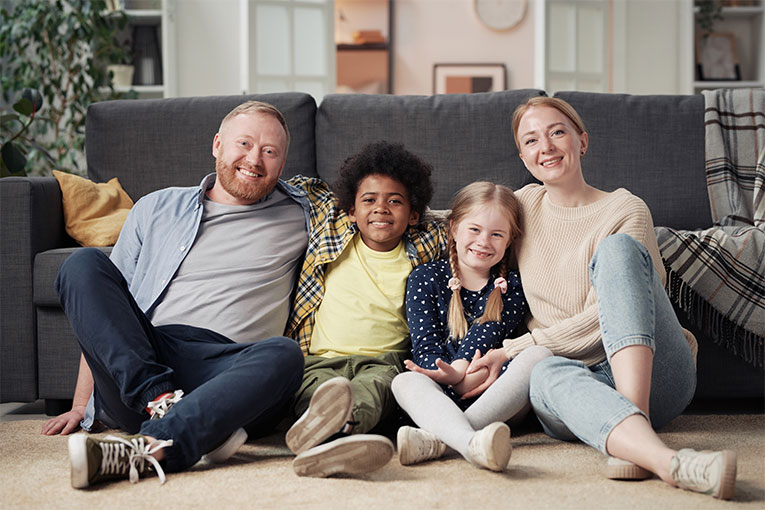Determining appropriate child custody arrangements when parents separate or divorce represents one of life’s most intricate yet vital responsibilities. Amidst profoundly difficult transitions, upholding children’s well-being and nurturing positive development must remain the foremost priorities. This guide examines fundamental child custody principles and considerations to equip parents undergoing relationship breakdowns to make sound decisions.
Centering Children’s Needs
All child custody determinations must uphold children’s safety, stability, and holistic well-being above other factors. Courts are empowered to establish custody arrangements that:
- Enable children to maintain meaningful bonds with both parents, where possible. This sustains vital emotional, social, and developmental continuity when families restructure.
- Create frameworks facilitating inter-parent cooperation over children’s caretaking. This equips formerly partnered parents to effectively co-parent through collaborative decision-making during children’s minority.
- Position separated parents to make choices explicitly benefiting their children’s growth. By emphasizing children’s needs in all deliberations and actions, maximally nurturing environments become sustainable.
Core factors influencing custody decisions consequently focus on ensuring children’s requirements are holistically met across:
Developmental Needs
- Preserving deep emotional bonds with each parent and between siblings that provide stability amidst family shakeups. Sustaining relations with parents after separation or divorce is associated with better mental health and self-esteem outcomes in adulthood.
- Maintaining school continuity, community-based friendships, and extracurricular activities that aid confidence and competence building. Disrupting such developmental foundations severely impacts children, so it must be avoided.
- Facilitating trusted access to medical and psychosocial support attuned to children’s unique mental and physical health needs at vulnerable times.
Capable Caregiving
- Furnishing primary living environments exhibiting genuine stability and nurture. Disordered homes marked by tension or outright violence create toxic stresses, negatively affecting development.
- Ensuring children’s holistic needs across nutrition, housing, economic support, recreation, and transportation get adequately met. This requires appointing guardians demonstrably capable of providing dependably for all essentials or otherwise coordinating robust caretaking networks.
- Assuring caregivers can provide age-appropriate guidance and boundaries that foster positive growth. Children thrive when parents and guardians offer predictable schedules, constructive reinforcement, and developmentally sound decision-making.
Relationship Continuity
- Weighing the proven parent-child relationships cultivated over years concerning levels of involvement and direct caretaking, where safe and beneficial, sustaining such bonds provides stability amidst separations.
- Accounting for the articulated preferences of sufficiently mature children regarding custody arrangements. While courts ultimately decide placements, input from teens often helps gauge viability.
By keeping children’s needs centralized amidst emotional separations, parents can better work cooperatively in their dependents’ best interests during fraught proceedings.
Models of Custodial Care
Various frameworks enable courts to determine arrangements aligned with affected children’s welfare across different familial contexts.
Joint Custody
Joint custody allows children to preserve equally substantial bonds with both parents post-separation through shared caretaking roles and responsibilities. Under joint agreements, both guardians hold authority over deciding on major areas concerning:
- Residency specifics, like households children reside in and visitation schedules facilitating reasonable time at each parent’s home, getJointCentre joint custody arrangements on upholding stability, nurturing, and retaining meaningful two-way relationships for children with both parents.
- Schooling, choice of medical providers, and participation in enrichment activities like sports or arts education. Coparents discuss and align on such key developmental matters.
- Religious or cultural exposure and observances, if applicable, must be mutually accommodated by separated parents who partake in such identity-shaping traditions.
- General welfare issues ranging from diet to appropriate discipline. Recently separated parents can struggle to see eye-to-eye on day-to-day child rearing, so joint custody arrangements must outline resolving mechanisms.
Benefits of joint custody include continuity, consistency, and the ongoing substantial involvement of both separated parents in children’s lives to the fullest extent possible. However, joint custody requires extensive inter-parent coordination and cooperation, which poses very real challenges. Particular difficulties predictably arise around:
- Communicating relevant information about children’s health, development, and environments. Parents must frequently update one another on recent incidents, progression, and material changes.
- Smoothly transitioning children between households to minimize disruption. Children thrive on stability, so separated parents must diligently enable predictable, supportive home transitions.
- Overcoming routine differences around parenting approaches, rules, and disciplinary mechanisms. Parents must demonstrate a willingness to align their techniques to the degree possible.
- Preserving children’s emotional wellness despite the inherent chaos of fractured families. Separated couples should shield children from unnecessary adult disagreements and provide reassurance during transitions.
Joint custody ultimately centers on adaptively upholding continuity, stability, and meaningful retained relationships for affected children with both co-parent figures to the greatest extent achievable. With a willingness for flexibility and reasonable compromise, separated parents can make joint custody viable and rewarding for all involved.
Sole Custody
Under sole custody, one parent assumes comprehensive legal responsibility for children’s residency, safety, and caretaking needs with minimal required input from the other parent. The non-custodial guardian possesses restricted rights like supervised visitation, which courts determine based on the affected kids’ best interests.
The benefits of sole custody arrangements for children center on:
- Providing consistency through one unambiguous primary household in which children reside without complication.
- Streamlining major decision-making around medical treatments, schooling, or relocation since only one parent requires convincing.
However, severely limited child access for non-custodial parents can strain or fracture vital caregiver-child bonding time over the long term. Additionally, sole custody scenarios enable and often incentivize parental alienation behaviors like restricting information or bad mouthing, which deeply destabilize affected children.
In exceptional cases marked by extreme conflict with minimal cooperation potential, even around vital parenting decisions, sole custody emerges as necessary. But it rarely represents an ideal outcome since children benefit from the sustained involvement of both parents, where possible.
Third-party custody
In certain familial contexts of parental absence or gross dysfunction, granting temporary custody rights to responsible third parties like mature grandparents or other relatives can provide children with rare islands of stabilizing respite. While conceived as short-term arrangements in most jurisdictions until parents sufficiently recover their capacities, such kinship placements may offer continuity and caretaking stability unavailable to struggling guardians.
Interpreting the Legal Landscape
Modern child custody decision-making processes revolve around establishing:
- Appropriate care frameworks
- Physical and legal custody alignments
- Visitation allowances
- Facility for modifications
interpreting often highly intricate and evolving state laws layered upon legal precedents. Engaging qualified family law counsel is consequently invaluable for realistically understanding respective rights and responsibilities.
Experienced attorneys further advise parents on optimally navigating the overarching process by:
- Demystifying local laws and court procedures governing petitions, hearings, and judgments. Retaining practitioners intimate with regional conventions, precedents, and typical timelines offers vital clarity.
- Explaining the documentation and evidentiary requirements parents must furnish when arguing their cases. From financial records to witnesses, documented cases succeed over rhetorical appeals alone.
- Guiding direct negotiations and legal interactions for preferential outcomes. Lawyers arrange and counsel clients through settlement conferences, mediation sessions, case management meetings, and hearings.
- Grounding expectations in practical insights around likely outcomes based on case experiences. Seasoned legal professionals incorporate the realities of local precedents into their planning.
- Helping develop customized proposed parenting plans outlining:
- Physical and legal custody assignments
- Specific minor child visitation terms
- Mandatory decision-making hierarchies and dispute resolution mechanisms for major areas like medical interventions or school transfers
- Explicit inter-parent communications and coordination protocols
- Built-in plan review provisions
With expert legal guidance, parents gain invaluable support in assessing pathways and advancing their positions for beneficial custody arrangements.
Alternative Dispute Resolution
Beyond direct judicial decree, modern child custody conflicts also become resolved through alternative dispute resolution mechanisms aiming more for cooperative conflict reduction than zero-sum adversarial proceedings.
Mediation Process
Mediation facilitates a reasonable compromise between disputing parents by:
- Having each parent professionally articulate objectives, interests, and acknowledged concerns to an independent mediator. Trained mediators highlight shared priorities, like children’s wellness.
- Building areas of agreement and identifying plausible, mutually agreeable solutions to explored issues through facilitated open dialogue. Mediators propose framework settlements supporting children’s needs and addressing legitimate fears raised by parents.
- Codifying mediated win-win custody agreements directly into formal proposed parenting plans for family court adoption. Judges typically ratify uncontested mediated agreements as binding, saving further litigation.
Mediation pathways allow for securing positive progress around:
- Preserving inter-parent relationships damaged by separation trauma is necessary to enable cooperative future parenting. Reducing feelings of fault improves post-divorce co-parenting.
- Mitigating residual animosities that could otherwise continue harming affected children for years. Children should never bear the cost of adult grievances.
- Averting prolonged, open-ended judicial proceedings and associated uncertainties that negatively impact children awaiting permanency. The courts recognize this and order mediation first.
By prioritizing beneficiaries’ needs through non-zero-sum logic focused on workable compromise, mediation often proves superior over one-sided litigation alone when amicable custody arrangements remain feasible. In parallel, involving child psychology professionals for neutral inputs around protecting children’s growth can further inform realistic mediated agreements.
Other Methods
Where direct negotiations consistently falter due to unbridgeable differences or unresolved anger, additional alternative dispute resolution pathways exist. These may operate independently or alongside mediation in multi-modal contexts. Major alternative dispute resolution methods include:
- Arbitration: An impartial third-party arbitrator renders binding verdicts on child custody terms after formally hearing arguments and evidence from both parents. Arbitration resembles private court proceedings but has the benefit of confidentiality.
- Early Neutral Evaluation: Respected child custody evaluators early in legal disputes furnish non-binding but informed recommendations around likely case outcomes to foster settlements. Opinions may inform mediated positions.
- Parenting Coordination: A parenting coordinator helps already-divorced parents effectively implement existing custody orders and parenting plans, facilitating necessary adaptations over the years. This protects prior agreements.
Choosing the Best Pathways Forward
Reaching beneficial and sustainable child custody outcomes Minimizing disruption to affected children’s stability requires carefully weighing all options and deliberately evaluating probable impacts on their growth.
In all cases, prioritizing children’s emerging needs for supportive environments that facilitate their resilient development as purposeful, happy adults should be the North Star guiding parental decision-making. Beyond strictly legal considerations, embracing compassionate communications focused on protecting children’s futures enables transcending past hurts to reach cooperative solutions supporting their flourishing despite marriage breakdowns.
With sustained child-centric mindsets, patience, and openness to considering creative possibilities, satisfactory arrangements founded on care rather than conflict become possible even amidst acrimonious separations. By seeking wise counsel from child custody lawyer, maintaining forward-positive attitudes, and partaking in meaningful solution-focused dialogue, divorcing parents can potentially establish evolvable custody frameworks optimized for their children’s well-being.





